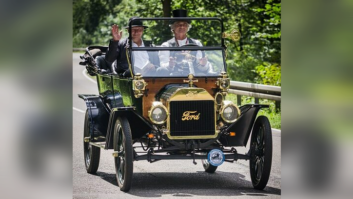Stations continue to go on the air and sign licenses to do so with HD Radio technology.
San Francisco’s KDFC(FM) began broadcast both an analog and digital signal May 1. The Bonneville classical station had been an Ibiquity test site for digital radio technology.
Bonneville planned to convert its other San Francisco FM stations, KOIT and KKDV, shortly.
Some public radio managers in the 13 seed markets heard demos of AM and FM HD Radio with PAC at several bit rates (96, 64 and 32 kbps) at the Public Radio Conference in May. Most managers contacted by Radio World thought the audio quality was good overall, although some said they did hear “something” on AM at lower bit rates. None of the managers believed this was a “critical” listening demo.
Nicole Sawaya, general manager of KALW(FM) in San Francisco, said, “I think the average person would have noticed an improvement in higher bit rates on FM.”
She said KALW’s audience tends to be highly observant and critical, to the point that listeners call the station to complain if they believe the equipment used to record audio isn’t up to snuff.
Sawaya said her station hasn’t decided if it can convert this year.
Deadline
Earl Johnson, vice president and general manager of noncommercial WABE in Atlanta, says his FM and TV station will convert to HD Radio and HDTV this year.
“I thought the sound quality was great. I could see what the difference was between AM analog and digital AM.”
Unlike commercial stations, public radio outlets face a more specific deadline. Money appropriated by Congress in 2002 is ready to be distributed in matching equipment grants by the Corporation for Public Broadcasting.
There’s $3.5 million in grant funding for FM stations. There is an additional $1 million for AM that will include antenna testing, specifically for directional and diplexed antennas, said CPB consultant and engineer Doug Vernier, who is helping stations apply for the grants.
Of the 50 potential applicants in the 13 Ibiquity seed markets that CPB has identified, three are AM.
CPB Director of Station Advancement Andy Bruno said he hoped to have the required grant application form on CPB’s Web site by early June. The form would need to be returned by June 30.
In order to qualify for the digital conversion funding, stations must be CPB-qualified, they must broadcast to a seed market and draw one-tenth of the average radio listening in the market when averaged over two Arbitron surveys.
Stations also must certify that they have matching funds available from non-federal sources.
Undecided was whether the grants would all be for the same amount or different amounts, Bruno said.
The deadline is tied to Ibiquity’s deadline for its latest incentive for early adopters, which remains June 30.
When asked why CPB was going ahead with fund distribution despite the standards-setting pause (see main story, page 11), Bruno said, “We do think the codec thing will be resolved one way or the other. We’re operating on good faith with Ibiquity. We’ve heard from Ibiquity this is their number-one priority.
“We want to be prepared to fund stations when the best product from Ibiquity is available. We have plans in place. We’re moving along based on what we know.”
Sources close to the issue said CPB must distribute the money now, or it would be difficult to ask Congress for more money for conversion next year.
After the recent Public Radio Conference, Ibiquity said two additional noncommercial stations had licensed Ibiquity’s technology, KUOW(FM) in Seattle and KUSC(FM) in Los Angeles. Fellow southern California pubcasters KCPB(FM) in Thousand Oaks, KFAC(FM) in Santa Barbara and KPSC(FM) in Palm Springs have also signed HD Radio licenses with Ibiquity Digital.
NPR said testing remains on track this summer on KKJZ(FM) in Long Beach, Calif., for its Tommorrow Radio project despite the standards pause.
NPR, Kenwood and Harris are involved in a project to see whether a second audio or a data channel can be carved out of a station’s main channel using IBOC. Items of interest to the involved parties: the robustness of the digital signal at a lower bit rate than the main channel and without an analog fallback, and the digital coverage area.







